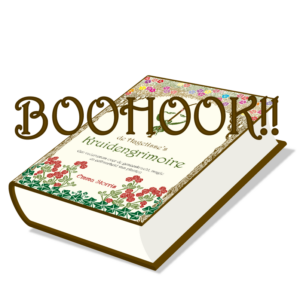
In folklore, St. John’s Wort, Hypericum perforatum, is a plant that is associated with summer and St. John’s Day in June, the time when the plant also blooms. Still, as far as I am concerned, winter is an excellent time to get to know St. John’s wort better.
In terms of medicinal properties, St. John’s wort is mainly known for its antidepressant properties. One of the types of depression that St. John’s wort helps against is the winter blues. So, this is an excellent plant to have around during the dark months around the turn of the year. This herb can also be deployed for many other mood-related conditions.
Lesser known is the fact that St. John’s wort is suitable for skin injuries, including burns and abrasions. Mind you, this plant comes with a load of warnings, so do read the entire monograph carefully before using it.
St. John’s Wort has an abundance of magical properties. It will not surprise you that this herb is strongly associated with midsummer and the power of the sun. Logically, it can be utilised for all kinds of magic related to passion and power. Love magic and protection are amongst those applications.
St. John’s wort stands on a strongly branched rhizome. The root has root buds. From these buds several woody stems emerge, which are reddish in colour and have two longitudinal wings. The root buds have a reproductive function. In winter, the entire above-ground part of the herb dies and small shoots with green leaves can be found at the root buds.
Towards the top, the stem branches strongly. Thus, the flowers can optimally catch the sun. Along the stems, we find opposite, oval leaves, up to 3 cm in size, without any petioles. The leaves are dotted with oil glands that are especially visible when you hold a leaf up to the light. They make the leaves seem to be covered in holes.
The flowers are bright yellow, star-shaped and up to 2 cm in size. They grow in cymes at stem apex. The oval petals show black stripes. The stamens are numerous, red-tipped and arranged in three bundles. When you rub the flowers, a red dye is released.
After flowering, a trilocular capsule, covered in small dots, appears. It contains the plant’s brown, cylindrical seeds.
The Germans regarded the red sap of the flower as the blood of Balder, the god of light and summer, and as the blood of Wodan. That is the reason the plant has been given a name associated with a prominent Christian figure, John the Baptist. The church wanted to thoroughly eradicate its association with Balder and Wodan.
St. John’s wort has been used medicinally since ancient times.
Basic membership is free. A plant monograph contains:
It's not allowed to copy content of this website
and view hidden content
